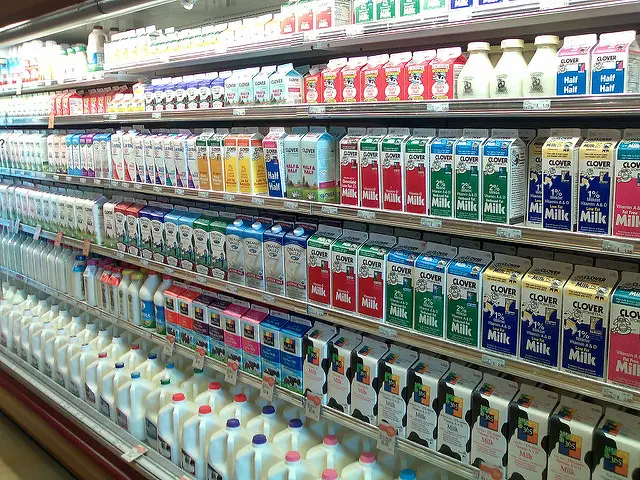 Is vitamin D milk the same as whole milk? There is a lot of confusion surrounding this issue, which is partly due to how milk is marketed. When a product is labeled as vitamin D milk, it has been fortified with vitamin D. The addition of vitamin D to milk began in the 1930’s as a way to provide consumers with the nutrient to help fend off rickets (softening of the bones in children), which was a health concern during this time. Vitamin D helps assist the body in the absorption of calcium, which subsequentially helps build stronger bones. Vitamin D fortification was a success as the incidents of rickets rapidly decreased after fortification was introduced in milk and other foods.
Is vitamin D milk the same as whole milk? There is a lot of confusion surrounding this issue, which is partly due to how milk is marketed. When a product is labeled as vitamin D milk, it has been fortified with vitamin D. The addition of vitamin D to milk began in the 1930’s as a way to provide consumers with the nutrient to help fend off rickets (softening of the bones in children), which was a health concern during this time. Vitamin D helps assist the body in the absorption of calcium, which subsequentially helps build stronger bones. Vitamin D fortification was a success as the incidents of rickets rapidly decreased after fortification was introduced in milk and other foods.
Today, nearly all milk is fortified with vitamin D. It is highly likely that if you go look at the ingredients of the milk in your refrigerator, no matter the milk fat percentage, they will show vitamin D3 as an ingredient. Typically, a cup of milk (any milk fat percentage) will provide approximately 25 percent of your recommended daily value of vitamin D.
Is Vitamin D Milk The Same As Whole Milk?
Vitamin D and whole milk are the same product, which both contain at least 3.25 percent milk fat. Essentially, they are just marketed under two different names or a combination of the two names. However, in the rare case that whole milk is not fortified with vitamin D, it could not be labeled as vitamin D milk. Despite whole milk being marketed as vitamin D milk, remember that the lower fat milk products almost always have the same amount of vitamin D.
The above being said, the higher fat in whole milk does a better job at protecting the vitamins in milk than lower fat varieties. As the FDA indicates: “Vitamin D is very stable in homogenized whole milk and is not affected by pasteurization or other processing procedures. Vitamin D in fortified homogenized whole milk will remain constant with little or no loss of vitamin potency during long periods of proper storage No loss of vitamin D will be experienced under normal shelf life periods.”
Photo Credit: Stephanie Booth

